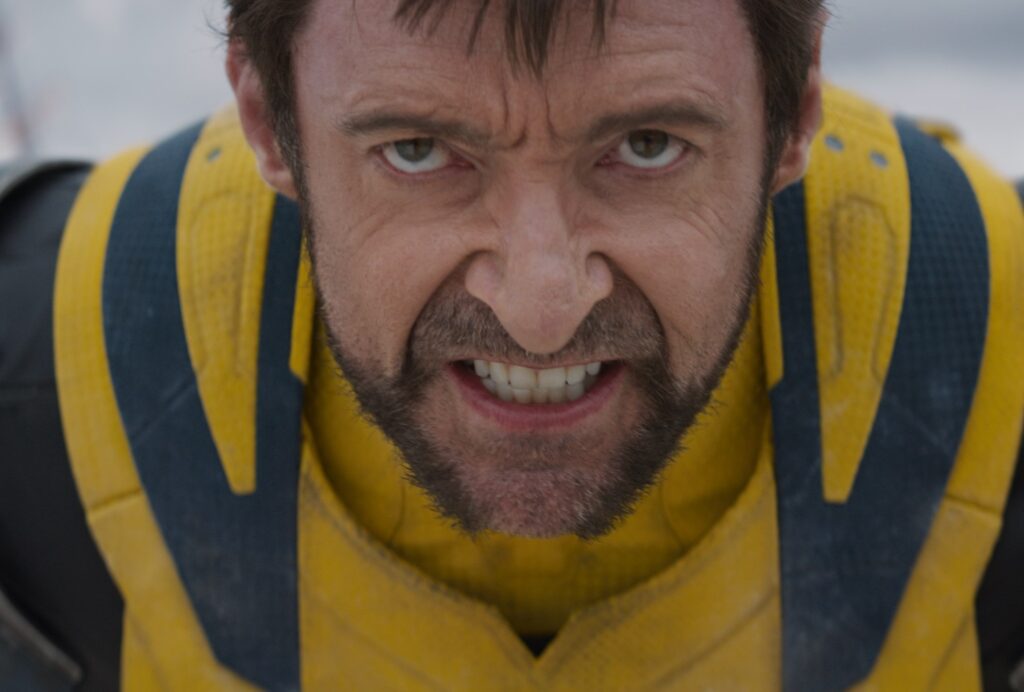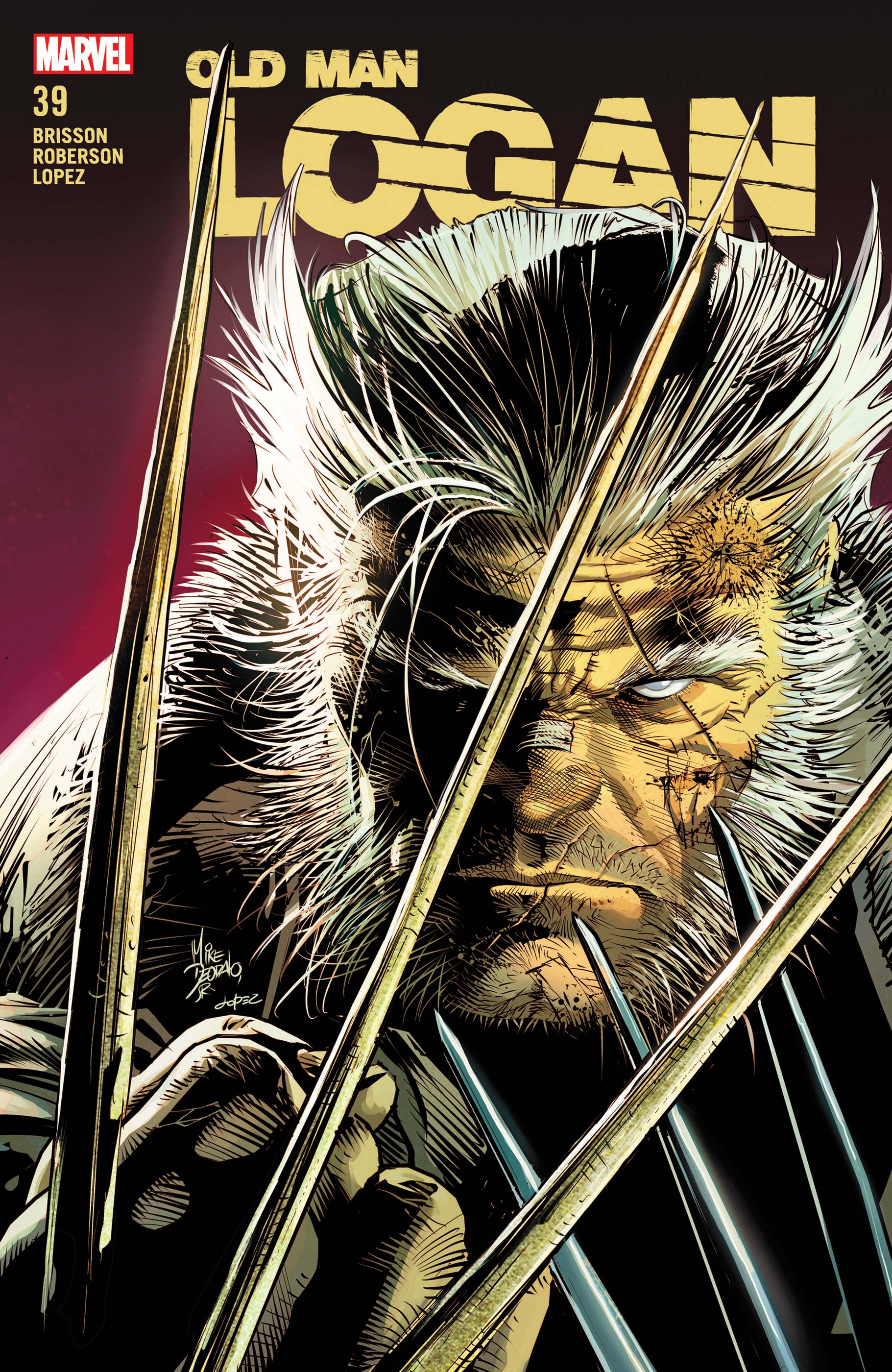Deadpool & Wolverine co-lead Hugh Jackman is 55 years old, and over the course of his acting career, he’s aged like any normal man who happens to be stunningly handsome and absurdly wealthy. That wouldn’t be a problem if he was playing virtually any other comic book character in existence. But he’s spent nearly 25 years now as Wolverine, the guy whose most notable talents (aside from the whole claws thing) are aging slowly and healing quickly. Jackman’s entirely normal age progression has been a sticking point for some fans, who’ve vocally proclaimed that he’s too old to be a plausible Wolverine.
Luckily for Jackman and his seemingly eternal passion for this role, Marvel Comics has given him an out. For the past 15 years, the publisher has been obsessed with the idea of an old Wolverine.
Jackman, who has played the role since the initial X-Men film in 2000, is probably Marvel’s most loyal live-action asset. He’s gamely grunted and slashed his way from the franchise’s early-2000s boom period under 20th Century Fox up through Wolverine’s latest screen outing, now under Disney. By the end of Deadpool & Wolverine, he and his wisecracking frenemy Deadpool (Ryan Reynolds) have more or less entered the far-flung multiverse version of the MCU, meaning there’s a chance he’ll pop up in the next big Marvel Studios crossover event. Avengers: Secret Wars is a definite candidate for a Wolverine cameo — even though that film is planned for a 2027 release, a full 10 years after Jackman originally hung up his claws and retired from the role.
But Logan — a film about saying goodbye to Jackman’s Wolverine — made it perfectly all right for Jackman to proudly sport some salt and pepper in his mutton chops. The film takes a lot of its notes from one of the most famous Wolverine comics of the last 40 years, Old Man Logan, a self-contained 2008-2009 arc in the pages of the Wolverine comic. In that story, set in an alternate universe in the far future, Wolverine/Logan is retired in a miserable apocalyptic wasteland. The world is ruled by elderly, deranged supervillains. Most of the hero population, including the X-Men, have been wiped out.
It’s later revealed that Logan killed his fellow teammates while Mysterio was deceiving him with an illusion, a fact that totally dissolved what little faith he had in heroism. So when he’s called back into action, he’s so emotionally traumatized that, for a while, he refrains from even unsheathing his claws.
Though the movie Logan shaves off a lot of Old Man Logan’s wider Marvel setting details (and cites Charles Xavier as the culprit behind the X-Men’s deaths), Logan is faithful to most of the comic arc’s pathos. Wolverine has a bottomless backstory in the comics, primarily because his powers allow him to live — or have already lived — as long as the writers want.
But by leaving him at the mercy of his inner turmoil and by slowing down his healing factor, Old Man Logan gets to truly grapple with Wolverine’s biggest, most recurring issues: his purpose and identity. Is he a killing machine? A teacher? A father figure to a found family? A lost soul doomed to straddle the line between vengeance and mercy? With death coming a little closer to knocking at his door, both Old Man Logan and Logan provide him with a crash-course experience in grappling with these questions, and reaching a conclusion: Though he will likely never see himself as fully good, his purpose ultimately lies in goodness.
Old Man Logan writer Mark Millar and artist Steve McNiven didn’t invent the idea of aging up a superhero to facilitate a deep dive into the poignancy of their existence: Frank Miller’s iconic The Dark Knight Returns did the same thing with Batman in 1986. Mark Waid and Alex Ross’ Kingdom Come offered up an entire aged DC Universe in 1996, and writer-artist Kaare Andrews gave Spider-Man a grim future in the 2006-2007 arc Spider-Man: Reign. But while continuations of the Dark Knight Returns universe are mostly limited to whatever Frank Miller feels like doing with it in his own corner of DC Comics, Old Man Logan wasn’t allowed to stay as an alternate-universe look at Wolverine’s future. Like Wolverine in Deadpool & Wolverine, he was thrust into something much bigger.
The comic book Wolverine of Earth-616 (regarded as the central continuity of Marvel Comics and the MCU, most of the time) spent a lot of the 2010s dead. He lost his healing factor to a virus in Charles Soule and Steve McNiven’s Death of Wolverine series, tracked down the mad Weapon X doctor who “created him,” then died after the fight. His super-peers did not handle this very well, and X-23 (the Wolverine clone who also appears in Logan and Deadpool & Wolverine) took up his mantle for a bit. But thanks to some multiverse shenanigans in the 2015 rendition of Secret Wars (another Marvel crossover/continuity clean-up effort), a version of Old Man Logan from a slightly different timeline got thrown into Earth-616. There, he wore his cool brown jacket, teamed up with the X-Men, and tried to prevent the terrible future of his own original continuity.
This was no brief sojourn. Old Man Logan dropped into various other mutant-themed titles, and his return extended through multiple volumes of the Old Man Logan comic. Volume I ran for five issues, as Brian Michael Bendis took him through the trials of the Battleworld in Secret Wars. A 50-issue Volume II followed, the first half penned by Canadian wunderkind Jeff Lemire, the second by Ed Brisson. Then he took his (for now) final bow in Brisson’s 12-issue arc Dead Man Logan.
And that’s not even counting the additional volume of Declan Shalvey and Mike Henderson’s Deadpool vs. Old Man Logan, which affirmed that no matter what universe Deadpool and Wolverine come from, they’re pretty much destined to argue, fight, then sorta get along in the end. Far from being a one-off, Old Man Logan’s new adventure spanned the latter half of the 2010s. Dead Man Logan #6 even features a freshly resurrected Earth-616 Wolverine seeking a bit of advice from his more grizzled counterpart, affirming the latter’s importance even in the face of the “real” version.
Wolverine’s Marvel pals didn’t seem to regard Old Man Logan’s run on Earth-616 as much of an oddity. They were pretty quick to embrace him as the real deal, especially since he was able to tamp down some of the angst that made the “real” Wolverine so consistently prickly. That’s pretty much where we leave the “old, but not Old Man Logan old” version of Logan at the end of Deadpool & Wolverine: He’s faced some of his trauma and his conviction that he’s a bereaved outcast, and he’s joined a new found family.
The comics made it clear that no one was worried about Logan’s age in whatever continuity he lands in, and the MCU seems to have followed suit with Hugh Jackman. Both characters become the same thing: a grizzled partner/mentor to a modern set of heroes, one who brings with him a lesson in facing trauma and discovering rebirth. That’s handy to have around in any medium. In short, both the comics and the movies have decided that it’s fine to just let Logan be Old Man Logan.
Jackman’s tenure in the role won’t last forever. Many of the current crossovers (including Patrick Stewart’s Professor X showing up in Doctor Strange in the Multiverse of Madness and Kelsey Grammer’s Beast popping into The Marvels’ mid-credits scene) find Disney grappling with the 20th Century Studios-produced Marvel movies that are now under its umbrella, and attempting to retrofit mutants into their gargantuan franchising plans. All signs point to the company eventually wanting an X-Men series of its own to mold, rather than a legacy set of famous characters from a previous corporation. Even in bringing prior Spider-Men to the MCU in Spider-Man: No Way Home, Disney took a second to affirm that Tom Holland, the MCU-specific Spider-Man, is “Peter 1.”
But thanks to precedent comics and Jackman’s aggressive portrayal of the character in Deadpool & Wolverine, his age — initially the cause of a thousand fan recasting discussions — seems to have been tabled as a topic. We don’t need a “new” Wolverine yet — at least not because the current one has aged out. Old Man Logan is just as valid a character as any other variation on the guy and can offer emotional perspectives that a younger, reboot-friendly model can’t. A few more wrinkles in his brow as he huffs around his fellow Marvel characters aren’t a cause for panic. If Jackman wants to hop on the Smith machine and wear yellow spandex for a few more years, we don’t need to worry about him not living up to some ideal of Marvel youth. He’s as comic-book-friendly a rendition of Wolverine as we’re ever likely to get.



![Three panels from Dead Man Logan #6, with Wolverine meeting his time-traveling older, white-haired counterpart at a table in a bar. Dialogue: Logan: “You’re really from the future.” Old Logan: “I am.” L: “And how does that go for us?” OL: [Silent panel, glowering.] L: “That bad, huh?” Meanwhile, in voiceover, OL debates how much to say about their future.](https://cirrkus.com/wp-content/uploads/2024/08/1723678047_232_Deadpool-Wolverines-Hugh-Jackman-isnt-old-by-Marvel-Comics.jpg)